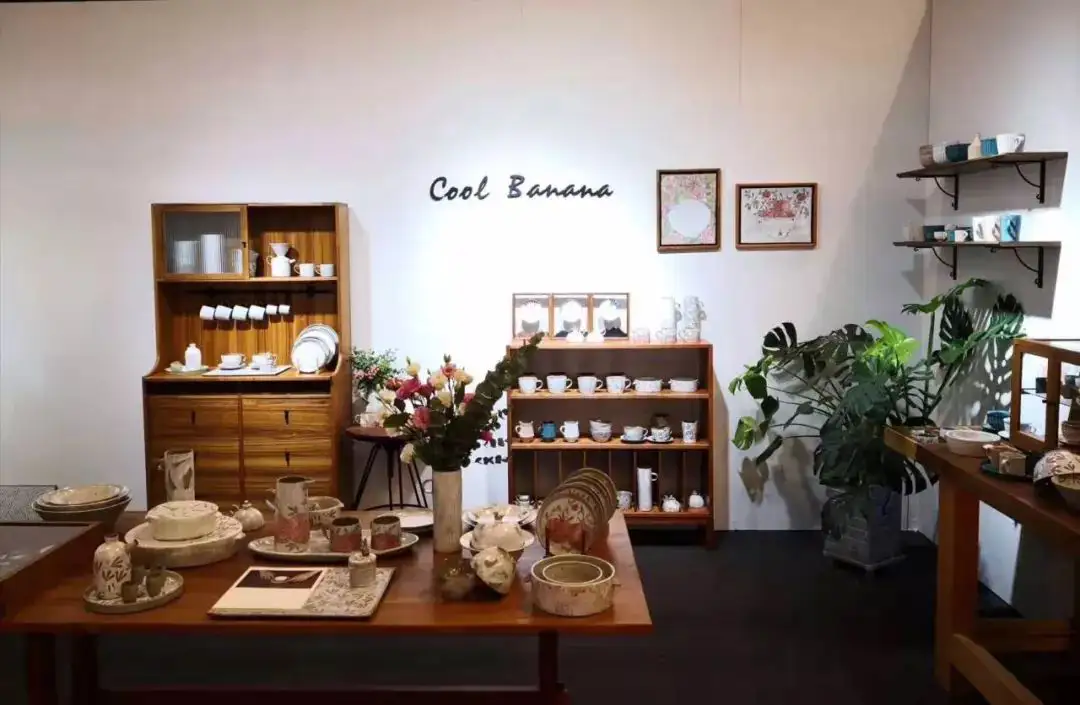
Cool Banana: Living Slowly, Crafting Slowly
- 22 Apr, 2025
- Posted by Admin
- 0 Comment(s)
Cool Banana: Living Slowly, Crafting Slowly
This couple once went viral online under the headline: “A Korean and a Jilin Native Became a Ceramic-Making Power Couple at the Foot of the Mountain.” Countless comments read, “This is the life I want.”
Guided by this “dream life” filter, we arrived at the Foot-of-the-Mountain Village, where time at Cool Banana Studio bears witness to the couple’s unique “life force.”
Kim Soohyun and Zhong Heng are entering their eighth year as ceramic artists. Their approach to creation follows an ancient, unhurried rhythm—one that has forged an unshakable resilience, insulating them from the era’s relentless tides.
Standing firmly by one’s convictions isn’t easy; challenges abound. But relax—solutions always emerge.
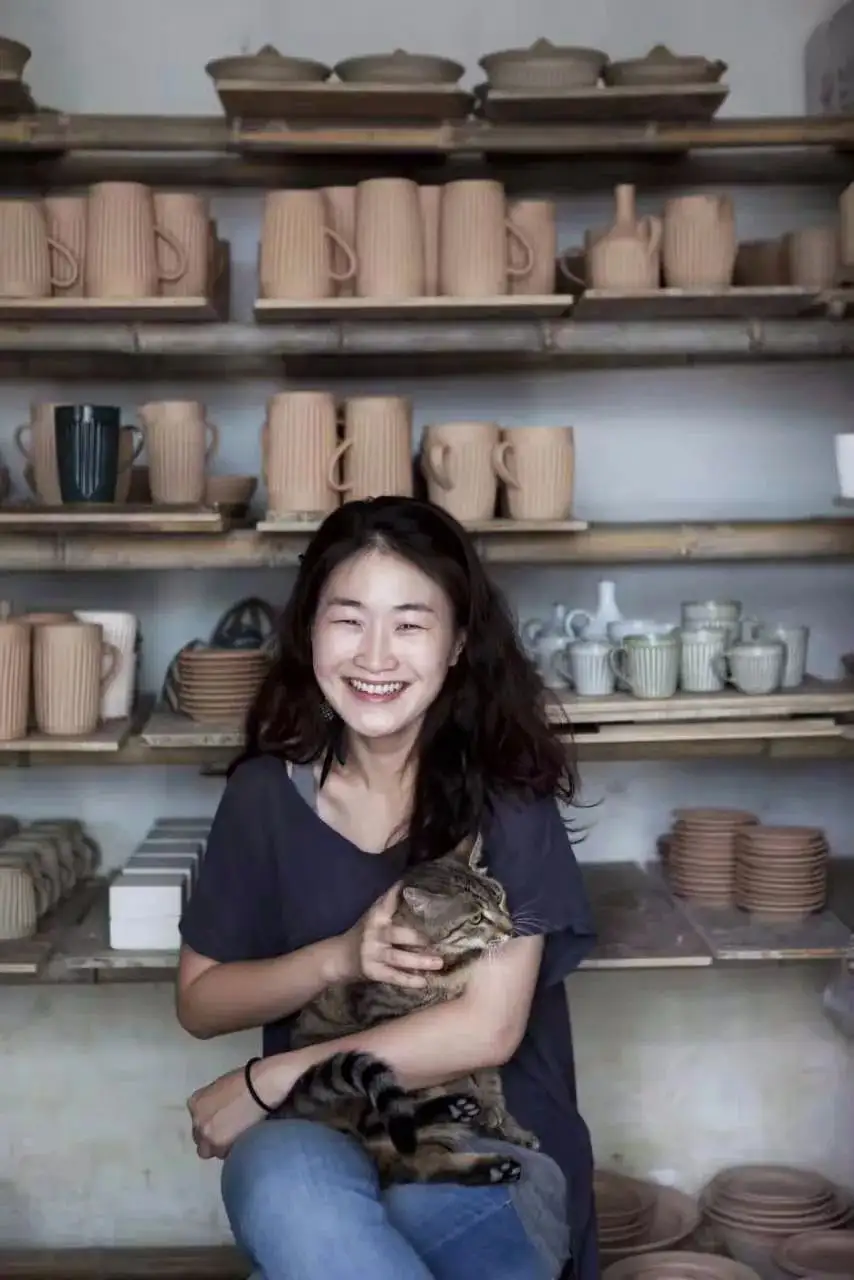
01 The Korean Girl Who Came to Jingdezhen for Pottery
Crafting Utensils Born from Daily Life
“In 2003, I traveled to Africa. Our guide, also African, would gather the group—tourists from various European countries—each morning by shouting, ‘Cool Banana!’ We’d all cheer, ‘Yeah!’ And so the day began.”
Kim Soohyun’s Mandarin is excellent. Though occasional tonal slips betray her non-native roots, these quirks lend her storytelling an oddly persuasive charm.
“Cool Banana” carries layered meanings. To her, it embodies a “let’s-start-the-day” mindset—adventurous, curious, and buoyantly adaptable. “Everyone laughs, today is happy.”
She offers a childlike analogy: “Look at a banana—it’s shaped like a smile. A big smile.”
Before, Kim was a quintessential Seoulite—university-educated, downing four or five daily coffees. She thrived on urban convenience: cafés, galleries, and parks at every corner, sparking endless inspiration.
Jingdezhen, at first glance, stunned her.
Though she’d lived in Beijing and Shanghai, moving to Jingdezhen for a ceramics master’s was always the plan. For Korean potters, most market offerings hailed from Korea or Japan. Occasionally, she’d spot pieces stamped “Made in Jingdezhen, China”—a holy grail for ceramists. “So I went,” she says.
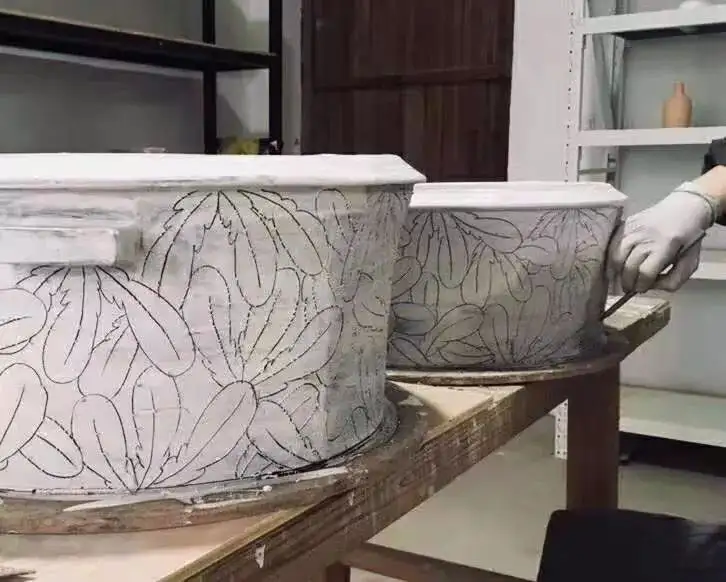
Her early days were disorienting. No subway, unreliable buses (she jokes, “Wherever people queued was the bus stop”), and a glaring lack of coffee gear. Despite Jingdezhen’s ocean of teaware, she found no proper coffee cups. Even classmates focused on tea sets. So she made her own: drippers, mugs, then plates.
Zhong Heng, her classmate-turned-partner, knew her coffee habits well. The soft-spoken Jilin native balances her whirlwind ideas with meticulous planning. Their first collaborative line—striped tableware—emerged from personal need.
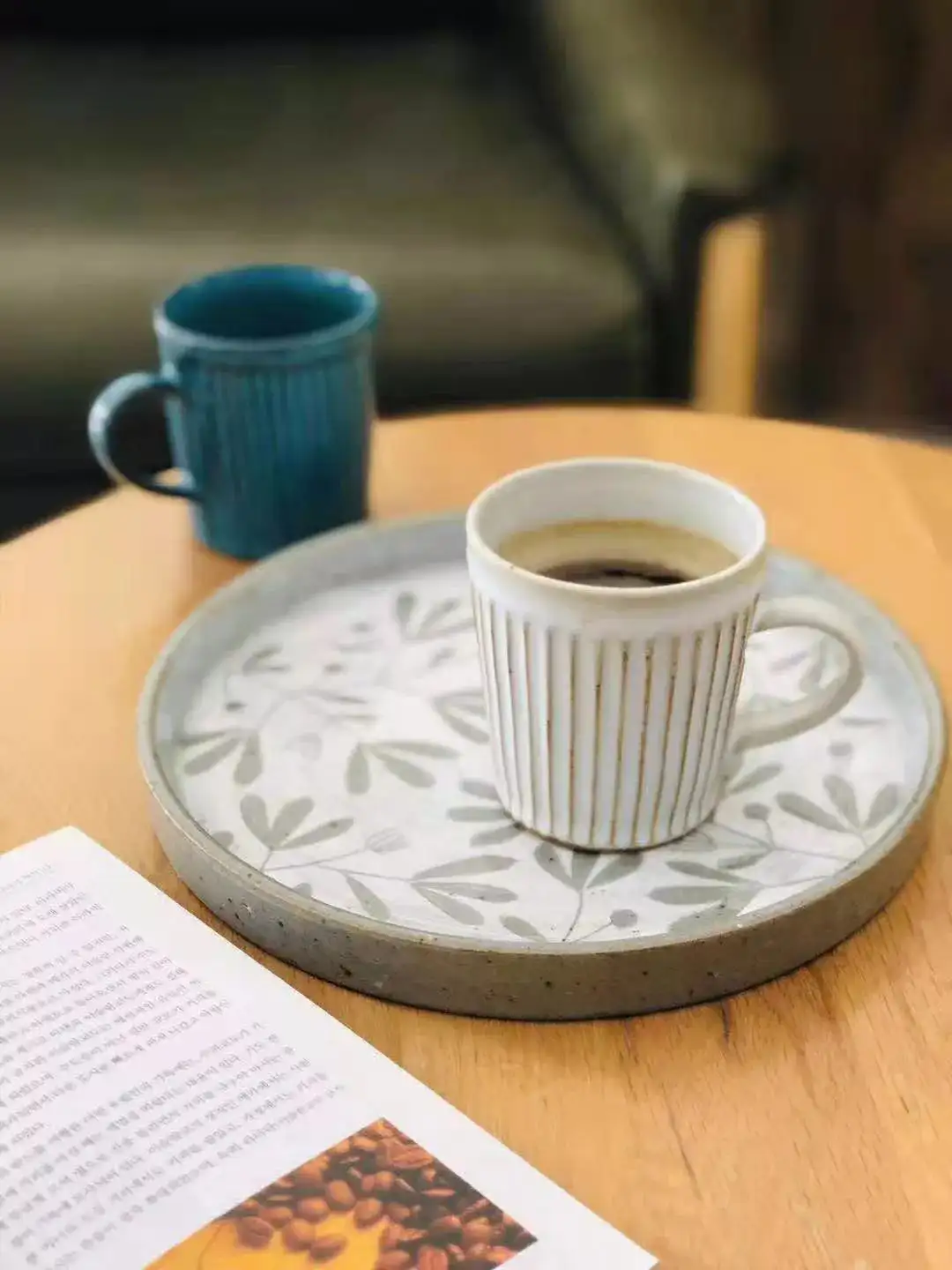
Compared to intricate blue-and-white or famille rose techniques, stripes seemed rudimentary, almost “too plain” amid Jingdezhen’s ornate tea sets. But the couple obsessed over subtle textures. “We tried carving, painting—finally settled on hand-scored lines. Molds feel lifeless; hand-rolled clay has better weight.”
02 Holding onto Freedom
Requires Luck and Help
Creating was one thing; selling, another.
Back then, Jingdezhen’s market split between high-end teaware (valued for craftsmanship and名家 scarcity) and bulk-produced daily porcelain. Cool Banana’s work fell into a niche no-man’s-land.
Summer 2012, friends nudged them to join the fledgling “Pottery Workshop Market,” founded by Hong Kong ceramist Zheng Yi to support young artists. “We had no clue—when to go, how to set up,” they recall, laughing. That morning’s sales: 600 yuan. “We were over the moon.”
More crucially, Zheng Yi became their first buyer, purchasing the striped set. Her endorsement—a vote for bold self-expression—fueled their confidence.
The stripe series evolved over seven years: cups, plates, teapots—all minimalist, geometric, life-centered.
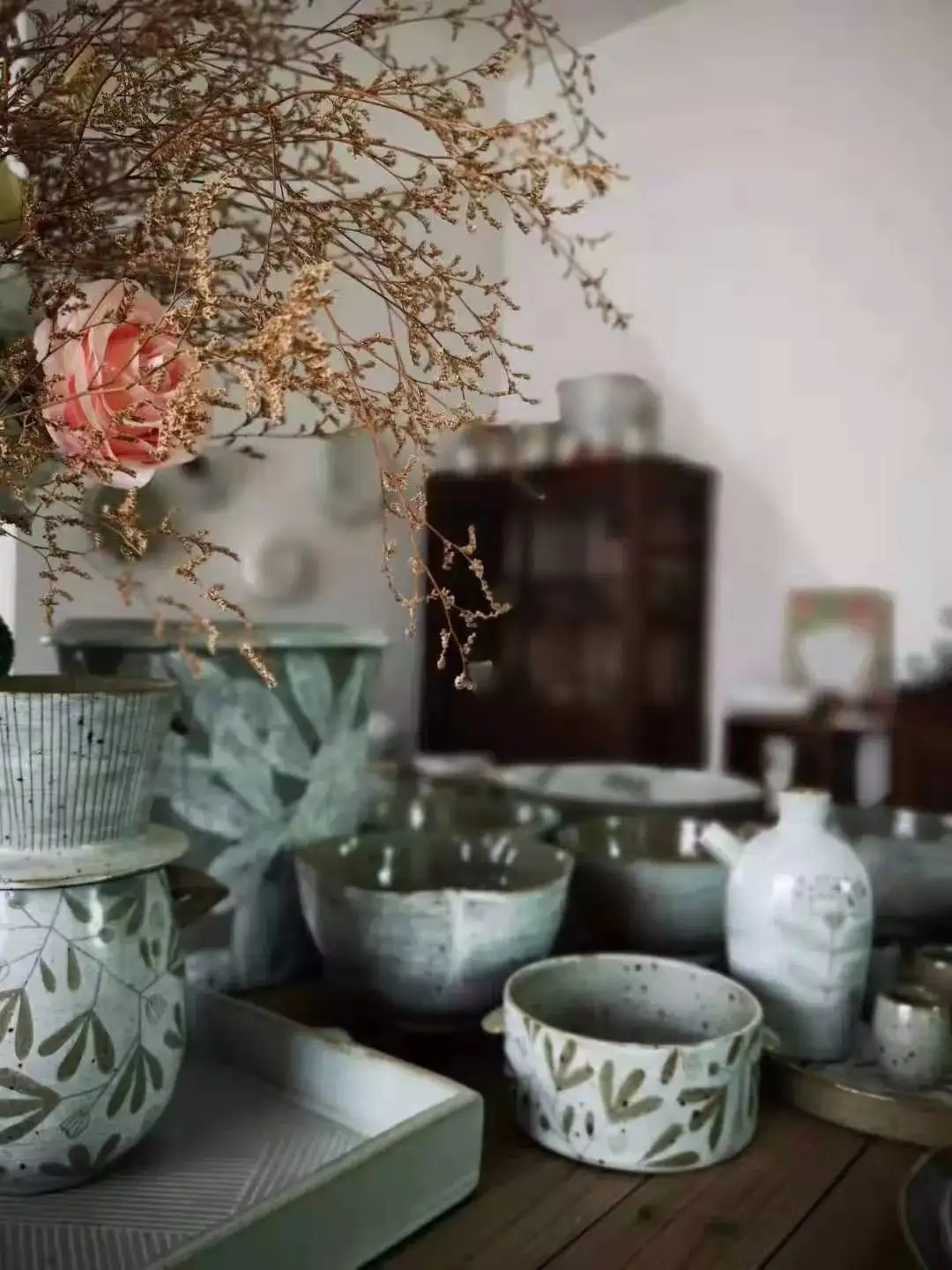
Their second line, “Powder Blue,” was inspired by Korean folk paintings during a Seoul visit. Traditional Korean buncheong ware, gray clay brushed with white slip, features playful patterns—floral scrolls, clouds, raindrops—aligning perfectly with Cool Banana’s ethos.
Seven years in, Jingdezhen’s art scene, though no match for megacities, has given them something rarer.
“This crumbling city holds surprises,” Kim says. Its collectivist-era assembly lines may be defunct, but the masters remain. “Nowhere else—not Beijing, not Shanghai—has this concentration of world-class artisans,” Zhong adds. “That’s why foreign artists come: they find collaborators here.”
03 Moving Forward
Amid Life’s Beautiful Chaos
Two years ago, they relocated to Foot-of-the-Mountain Village, a former porcelain hub so obscure even locals barely know it.

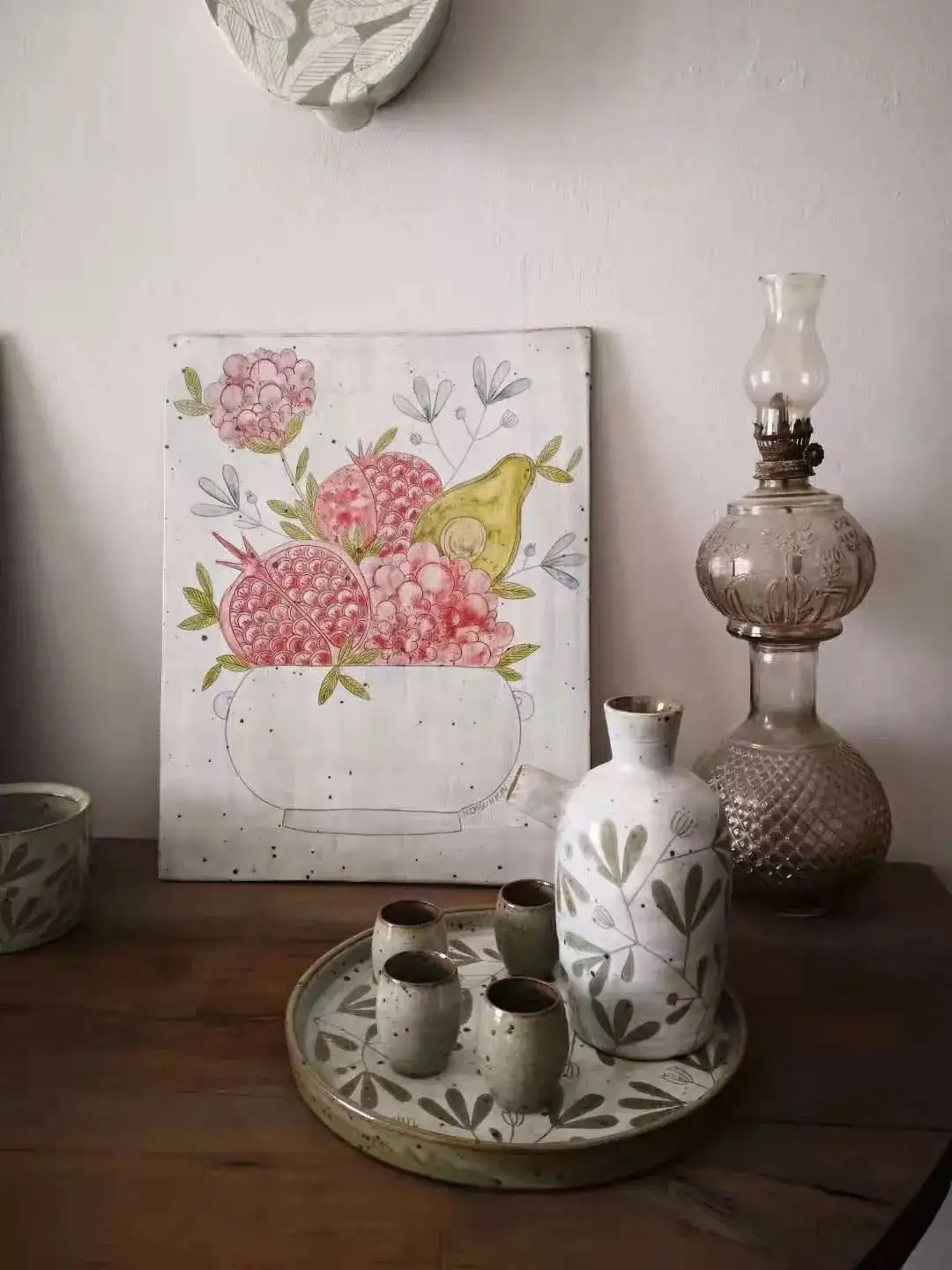
Sunlight floods their studio, where two long tables display an array of wares. A mint-green armchair, coffee bar, and plants create a café-like nook—utensils used daily in life’s small rituals.
Parenthood brought “friction”—life’s cozy blanket now pilled with challenges. “We’re a two-person operation; neither can slack,” Kim says. Her free-spirited rhythm shattered initially. Naptimes became frantic sprints between home and studio. “That little one drove me mad.”
They scaled back output, dropped clients, and weathered the storm. Now, 8:30 AM to 5:00 PM is studio time—then it’s childcare. “Turns out, separating work and life works,” Zhong shrugs.
Their synergy endures: Kim dreams up ideas; Zhong troubleshoots. “We influence each other,” he says. Late-night fixes are common: “Once, I spotted an unfinished teapot handle at midnight—had to fix it right then.”
Meals are simple—sautéed spinach, braised fish. Their early plates, designed for pasta, now accommodate Jingdezhen’s homestyle dishes.
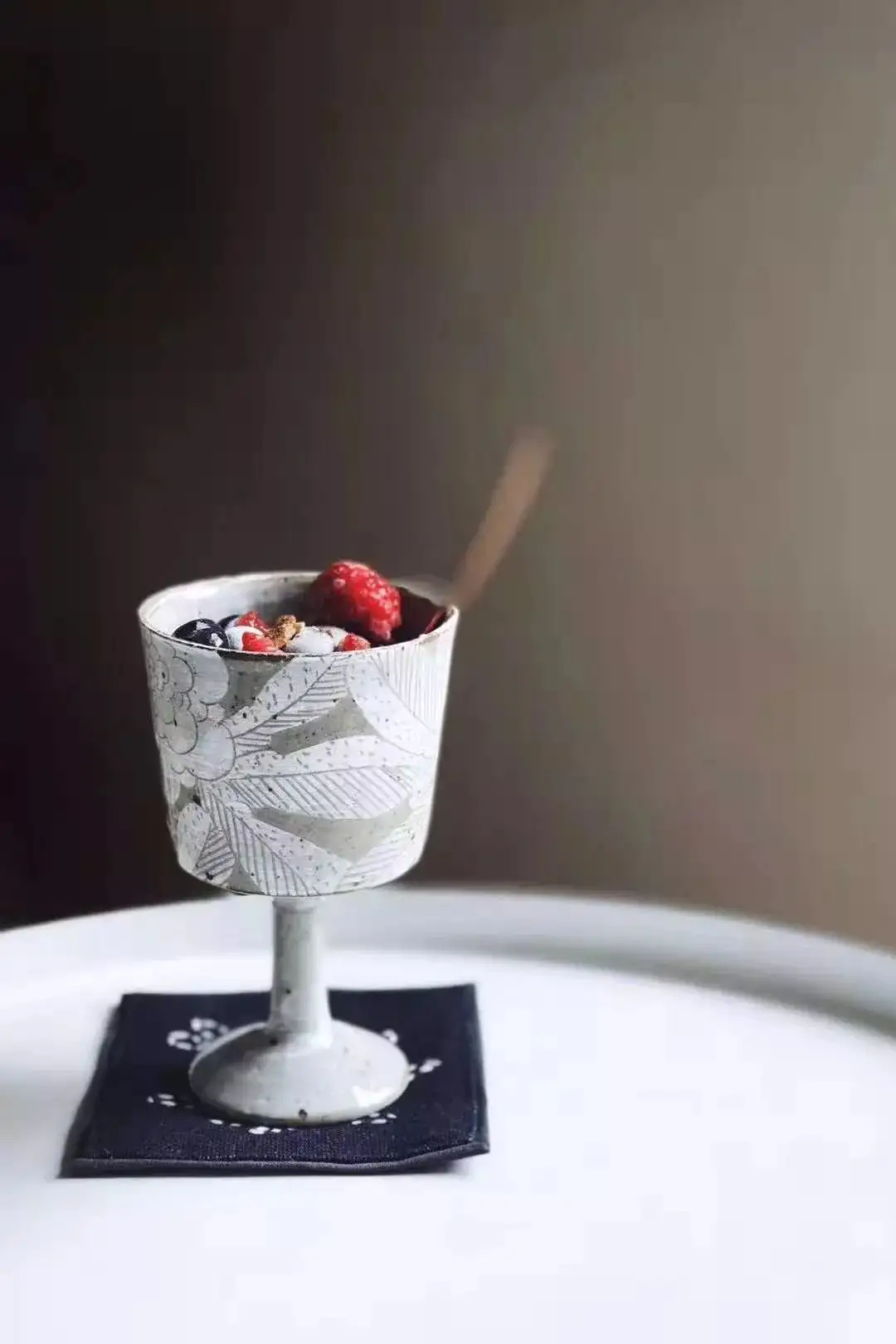
Some urge them to scale up, collab with platforms, or market a lifestyle. Zhong demurs: small-batch ceramics are their forte. “Life unfolds slowly; pottery takes time. Solutions come eventually. Those suggestions? We’ll see.”
Q&A with Cool Banana
Q: Do your work styles differ?
Kim: Totally. I need freedom—work when inspired, rest when not. He can’t stand that. But both ways have merits. My best ideas come in relaxed settings.
Q: How has parenthood changed your workflow?
Zhong: Pre-baby, we’d work past midnight. Now, with pickup at 5 PM, we’ve learned to focus. It’s healthier.
Q: As a Korean in China, what’s your take on young Chinese preferring Japanese/Korean ceramics?
Kim: China’s daily ware is excellent, but handmade pieces lack mainstream acceptance. We’ll keep at it—more need to know us.
Q: Why stay in Jingdezhen?
Zhong: Where else gathers the world’s top talent? The openness is unmatched. Try visiting a random factory elsewhere—awkward. Here, glaze sellers want you to know their products. Everyone shares knowledge eagerly.
